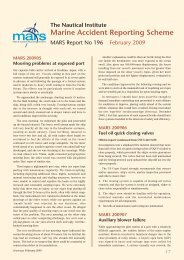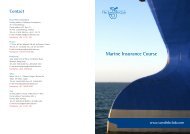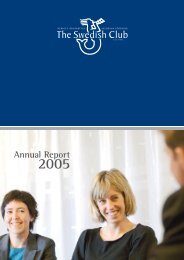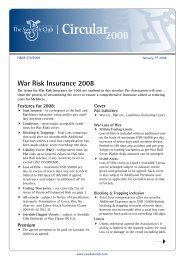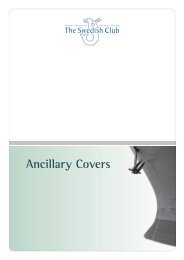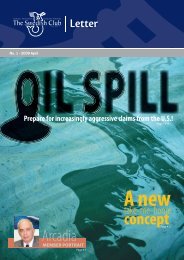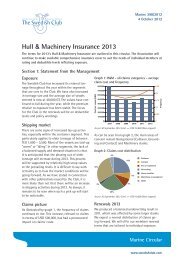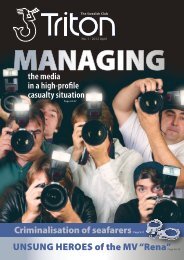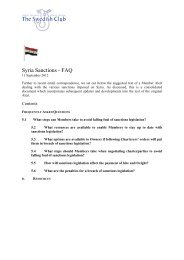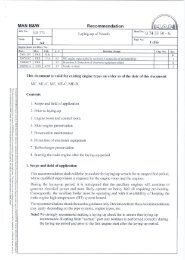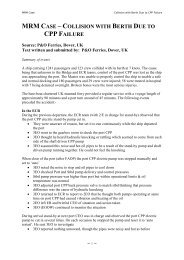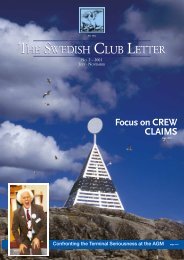List of Correspondents 2013 - The Swedish Club
List of Correspondents 2013 - The Swedish Club
List of Correspondents 2013 - The Swedish Club
Create successful ePaper yourself
Turn your PDF publications into a flip-book with our unique Google optimized e-Paper software.
Advice to Masters concerning H&M insurance<br />
3. Sounding<br />
All ballast tanks, void spaces and fuel oil tanks should be sounded in order to establish if any<br />
tanks have been breached. Records <strong>of</strong> soundings should be kept and updated on a regular basis. If<br />
any ballast tank has been breached, it may be test pumped in order to establish the rate <strong>of</strong><br />
ingress.<br />
• If a fuel oil tank has been breached, the authorities should be notified accordingly so that<br />
an oil pollution prevention operation may be initiated, if deemed necessary.<br />
• If possible, transfer oil from any fuel oil tank in exposed locations where the vessel is in<br />
contact with the seabed.<br />
• <strong>The</strong> vessel’s stability and strength should be calculated before executing any transfer <strong>of</strong><br />
oil or filling <strong>of</strong> ballast tanks.<br />
4. Notification<br />
Notify the owners, <strong>The</strong> <strong>Swedish</strong> <strong>Club</strong> and the local authorities about the grounding. Report the<br />
vessel’s exact position and heading aground. Any oil leakage must be reported to the local<br />
authorities promptly. Inform the authorities <strong>of</strong> the type and quantity <strong>of</strong> cargo onboard as well as<br />
ballast water and fuel oil remaining onboard. Display correct navigational lights and shapes.<br />
Consider radio warnings to keep other ships clear.<br />
5. External Assistance<br />
Unless the danger to the vessel or its crew is imminent, it is strongly recommended to contact the<br />
owners and/or the insurers before engaging outside assistance. Should the vessel be grounded in<br />
U.S. waters, refer to U.S. regulations.<br />
6. Determine the seabed composition<br />
Information may be available on the sea chart. Local authorities may have valuable information in<br />
this respect. Information as to the seabed composition may be received by lowering a piece <strong>of</strong><br />
steel pipe attached to a rope and examining the material that is retrieved inside the pipe.<br />
7. Tidal range<br />
Determine the tidal range and the times for high and low water. We recommend that you prepare<br />
a schedule over the tidal movements that are expected for the next couple <strong>of</strong> days.<br />
8. Ground reaction<br />
It is crucial to determine the true value <strong>of</strong> the ground reaction. This is <strong>of</strong> particular importance<br />
when establishing whether the vessel may be re-floated only by de-ballasting, transferring fuel oil<br />
within the vessel, or whether the cargo needs to be unloaded. An approximate ground reaction<br />
can be calculated by using the mean draft before the grounding and after the grounding.<br />
Kindly report in accordance with section B <strong>of</strong> these guidelines.<br />
9. Weather<br />
Obtain the latest weather forecast for the area, including predictions for swell and currents, as<br />
available.<br />
<strong>The</strong> <strong>Swedish</strong> <strong>Club</strong> | 171



